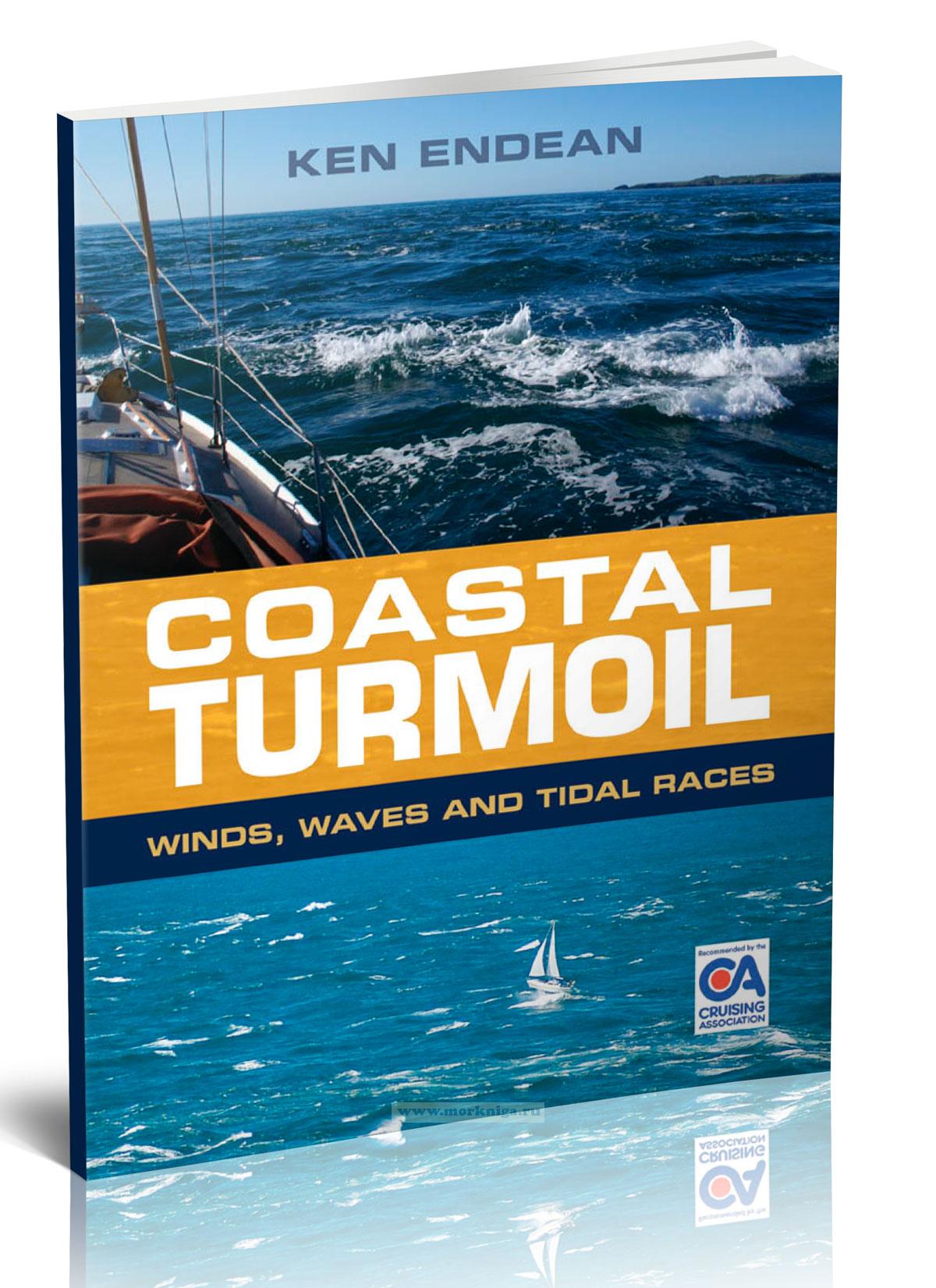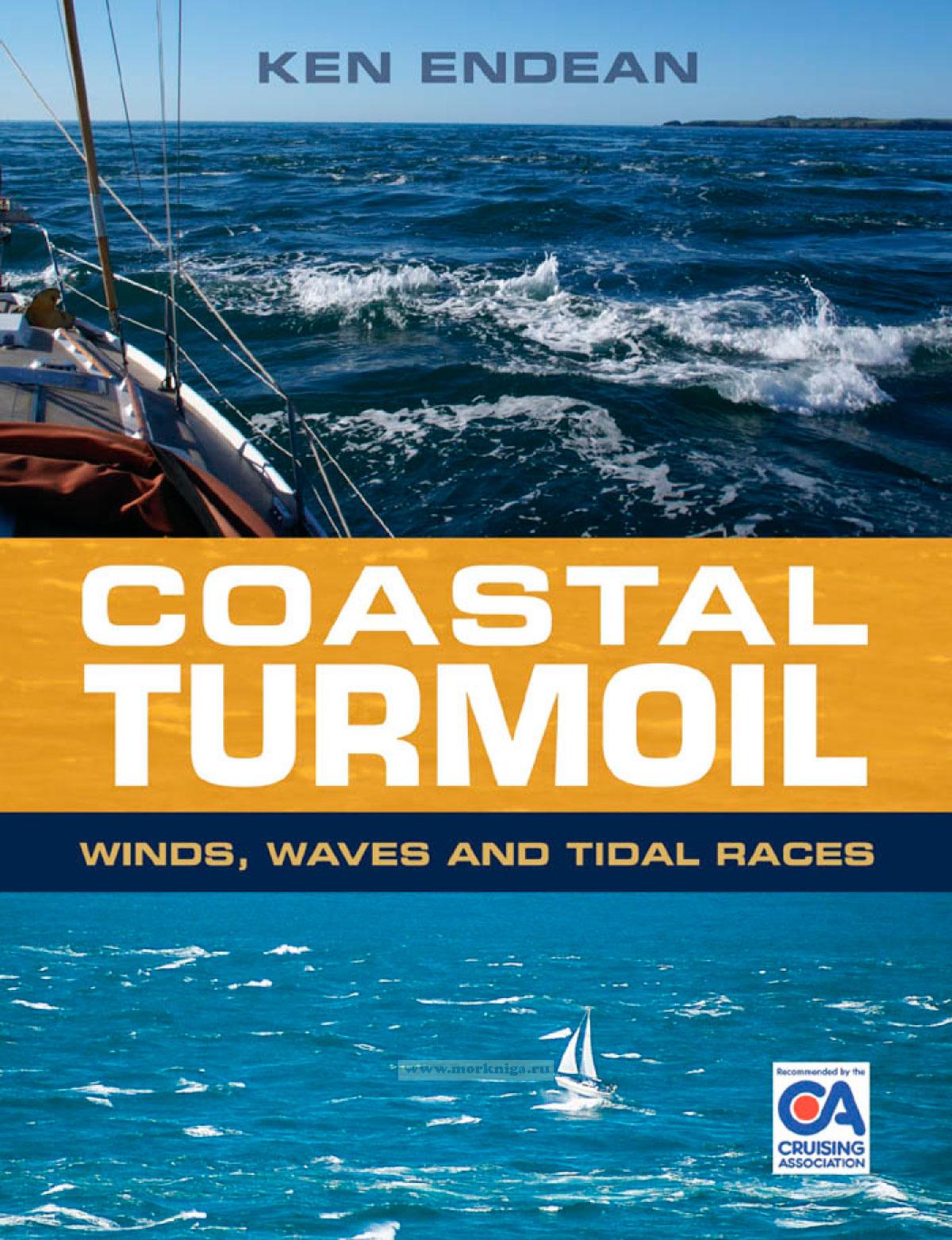Coastal Turmoil. Winds, waves and tidal races/Прибрежное волнение. Ветры, волны и приливы и отливы
Книга на английском языке.
Most boating is done in coastal waters, yet being close to land can often present greater dangers than sailing offshore. Near to the coast, sea conditions are more complex: winds and currents change in strength and direction, often unpredictably, waves are distorted by shallows, and even in fine weather there are tidal races, tricky headlands and other areas of rough water that can increase the risks of human error, gear failure and seasickness.
Many of the recommended techniques used in offshore voyaging - such as lying to a sea anchor or trailing warps - are not suitable when close to land. In this highly practical guide, filled with helpful tips, real-time techniques and sound advice born of years of first hand experience, Ken Endean explains the phenomena of rough water and shows how a good understanding of coastal sea conditions and careful passage planning should enable boaters to avoid the roughest areas, seek shelter underway and thereby reduce passage times.
He includes advice on: coastal winds and waves, shallow water and shoaling, swells and currents, tides and currents in conflict, estuary effects, bars and banks, when to take the long way, how to read the surface, getting into harbor safely, making the most of smooth water, and much more.
Coastal boaters have little scope for mistakes and plenty of opportunities to exercise skill and sound seamanship - this practical down-to-earth book will enable everyone, whether in a yacht or a powerboat, to do just that.
Contents
Introduction
1 Ripples, Rollers, Rapids and Races
2 Coastal Winds
3 Waves
4 Waves in Shoal Water
5 Flowing Water
6 Waves and Currents in Conflict
7 Waves on Steady Currents
8 Estuary Effects
9 Close Offshore
10 Reading the Surface
11 Rough Water and Harbours Smooth Water and How to Enjoy It
Index


 Выживаемость и безопасность на море. Непотопляемость и пожарная безопасность
Выживаемость и безопасность на море. Непотопляемость и пожарная безопасность  Медицинская помощь на море (циркулярное письмо Комитета по безопасности на море Международной морской организации № 960 от 25.05.2000). Medical ass
Медицинская помощь на море (циркулярное письмо Комитета по безопасности на море Международной морской организации № 960 от 25.05.2000). Medical ass  Выживание и безопасность на море в вопросах и ответах
Выживание и безопасность на море в вопросах и ответах